Chris Cincotta, LMFT, of the OCD Center of Los Angeles, discusses how to implement an effective mindfulness-based response prevention approach for the treatment of OCD and anxiety, and how to prevent mindfulness from becoming just another compulsion
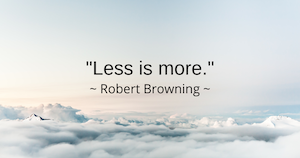
valuable approach in managing OCD and anxiety.
A martial arts student went to his teacher and said earnestly, “I am devoted to studying your martial system. How long will it take me to master it?” The teacher’s reply was casual, “Ten years.” Impatiently, the student answered, “But I want to master it faster than that. I will work very hard. I will practice every day, ten or more hours a day if I have to. How long will it take then?” The teacher thought for a moment, “20 years.”
~A Zen Story
Obsessive Compulsive Disorder (OCD) takes away your confidence in your beliefs, and completely turns you on your head; breaking your trust in others, and most of all, trust in yourself. Trust can be regained through treatment. It is not a mystery how to treat OCD. The gold standard of treatment for OCD is Exposure and Response Prevention (ERP). The two dominant theories pertaining to the understanding and treatment of ERP for OCD are Emotional Processing Theory (EPT) and Inhibitory Learning (IL). Treatment should be clear and understandable. This article focuses on how to stop doing compulsions – the “RP” in ERP. A simple mindfulness-based response prevention approach will help you move away from your mental and physical compulsions, thus leading to successful OCD treatment, and ultimately moving you towards what you value in your life and living the life you want to live.
There are many ways to do exposures, but fewer ways to do response prevention, that is, to not do compulsions. Of course, this isn’t the only way not to do compulsions. There are a handful of other ways that can be helpful. The method here is mindfulness-based. The steps of this mindfulness-based response prevention plan are as follows:
1) Notice – name/label/note – “I notice (blank).”
- Thoughts, images, memories
- Feelings/emotions
- Physical sensations and urges
- Physical and/or mental behaviors
2) Refocus and continue on with the next present moment activity:
- Reading, working, TV, conversation/listening, eating, driving, brushing teeth, etc.
3) Repeat. Go back to steps 1 and 2 when:
- Same thought/image/memory comes back
- An associated thought/image/memory comes back
- The feeling/emotion and/or physical sensations stay
- Compulsion occurs
The above plan is a common and simple approach that is based on basic principles of mindfulness that have been laid out in many important works in the field, including but not limited to, the concepts and interventions put forward pertaining to the treatment of OCD. Such specifics works that have inspired and contributed to this approach related to OCD specifically include Jeffrey Schwartz’s four step “4 Rs” method from his book Brain Lock, Jonathan Hershfield and Tom Corboy’s, The Mindfulness Workbook for OCD, and Martin Seif and Sally Winston’s four step “DEAF” method from their book Needing to Know for Sure.
Although these different sources vary from one another, it is easy to see how the similarities overlap. The fundamental essence underneath these practices of mindfulness is the same. It is also worth noting that the concepts in this method are universally found. Whether secular or non-secular, to the hundreds of books and articles related to the practice of mindfulness and meditation, including the other established mindfulness-based practices of Mindfulness-Based Stress Reduction (MBSR), Mindfulness-Based Cognitive Therapy (MBCT), Acceptance and Commitment Therapy (ACT), Dialectical Behavioral Therapy (DBT), and Mindfulness-Based Response Prevention (MBRP). This three step approach here is nothing new.
According to Jon Kabat-Zinn, “Mindfulness is awareness that arises through paying attention, on purpose, in the present moment, non-judgmentally.” Kabat-Zinn is one of the pioneers responsible for integrating an Eastern practice into a Western secular scientific approach. His eight-week Mindfulness-Based Stress Reduction program was one of the first empirically-based mindfulness research programs. Through this study and implementation of mindfulness meditation and mindfulness-based practices, we see how effective mindfulness is for the treatment of OCD. We can’t control our thoughts, feelings, and physical sensations, but we can learn how to control our mental and physical responses to them. With our understanding of this basic principle, we see how mindfulness practice can restore agency. We can restore not only our overall sense of control, but our literal ability to stop compulsions. This ability, with its emphasis in choice, is highlighted throughout our practice of mindfulness through directing our focus of attention. And in addition to this focus on mindful attention, it is the mindful attitude we adopt that makes it so effective. We act in the spirit of mindfulness through adopting a non-judgmental, flexible, and observational quality of awareness.
So let’s get to this method.
Step 1: Notice the Thoughts, Emotions, Sensations, and Behaviors
When you notice that you are experiencing an unwanted thought, feeling, sensation, urge, physical or mental behavior, simply state: “I notice…” Seeing this demonstrated in various OCD subtypes can be helpful:
- A person with Relationship OCD (ROCD) might say:“I notice I am having the thought: Am I really attracted to my husband?”
- A man suffering from Sexual Orientation OCD (SO-OCD) might state, “I notice the sensations of arousal in my groin, and I notice I am having the thoughts of what if I’m attracted to him?”
- A woman with Sensorimotor/Hyperawareness OCD might say, “I notice I am very overwhelmed with how often I am blinking.”
- A boy suffering from Contamination OCD might state, “I notice I would really like to wash my hands more.”
- Someone with Pedophile OCD might say, “I notice I have the fear that I might have just checked that kid out.”
- A person with OCD struggling with Reassurance Seeking compulsions might say, “Ok, I see I am doing a lot of mental compulsions and searching my memory for reassurance regarding if I did anything inappropriate.”
- A woman suffering from Body Dysmorphic Disorder might state, ”I am having these negative self hating thoughts about my face and body.”
We acknowledge the present experience, we acknowledge those thoughts and emotions, sensations, and behaviors. We don’t deny, push, fight, argue, suppress, problem solve, reassure, figure out, or ruminate. Those are compulsions. We simply acknowledge and notice. This is done in an objective manner. When we practice mindfully acknowledging our present thoughts, we can allow some specific effects to occur.
Using the phrase “I notice…”
A tool to use in the beginning of practicing this technique is to use the language of “I notice…” When we use that phrase, we go into what many have called the “observer self.” When we go into this observational mode, we see what’s going on inside. We watch our internal processes as they unfold in real time.
In this “observer self,”we create a space between us and it: us and our intrusive thoughts, us and our emotions, etc. The psychological term for this is called “discernment.” Daniel Siegel (2007) in The Mindful Brain, defines discernment as a process that is created where, “…it becomes possible to be aware that your mind’s activities are not the totality of who you are.” This is an incredible phenomenon, especially since of course this is all happening in “us.” It is in this space that perhaps the biggest benefit of this practice lies: choice. This is where we can decide to choose whether or not to do compulsions. And within this degree of slight space and separation, there can be a lessening. A lessening of the identification with these intrusive thoughts and experiences, and also a lessening of distress itself to a degree can occur. “Name it to tame it,” as the famous statement goes. In particular, research into naming emotions has shown this effect, known as affect labeling.
Affect Labeling
Affect labeling is simply the practice of putting a name to our emotions. “I feel anxious, I am upset,” etc. Affect labeling helps decrease the impact of the emotion. Although the practice of naming our emotions can help “tame” the experience, one should not expect that the emotional pain will just magically evaporate, or even help. Nor should it be our intention or goal to decrease anxiety. That would most likely be a compulsion. But it does help us exist with the emotional pain and intrusive thoughts and sensations that are present.
Affect labeling is specifically used in the ERP treatment. In the Annual IOCDF Conference of 2020, Jonathan Abramowitz’s presentation on the Inhibitory Learning Model of ERP recommended affect labeling as a linguistic technique used within the exposure itself to help get the most out of an exposure, by enhancing learned non-threat associations. Weisman, J., & Rodebaugh, T. (2018), in their article, Exposure therapy augmentation: A review and extension of techniques informed by an inhibitory learning approach, further discuss the use of affect labeling and its use in exposure.
The practice of mentally naming/noting/labeling our thoughts, emotions, physical experiences and urges, and behaviors, are commonly done in mindfulness meditation. Some of those meditations are focusing on the breath meditation, body-scan, raisin meditation, meditation on sounds and/or other senses, meditation on thoughts, choiceless awareness, and informal mindfulness practice. These practices are great ways to learn and help foster the experience of mindful awareness.
Moving Beyond
Using the phrase “I notice…”, or other options such as, “I see…,”“I’m aware of…,” “I have the thought…,” “I have the feeling…,” etc., acts as a guide to point your stream of awareness. You shift from language to experience. You don’t stay with the words themselves. We don’t focus on the words or the object in our mind. We flow into experience. The words help guide the practice, but then we leave them behind.
Eventually we naturally drop the phrase, “I notice,” and move into just noticing.” To just notice means you naturally become aware of whatever intrusive thoughts and experiences that are happening in your mind and body. You become aware of what you are experiencing and come back to the present moment activity (Step 2). Ultimately, the words get in the way of fully experiencing the present moment.
A Few Common Noticing Compulsion/Mistake Traps
Getting stuck on having to make sure you notice everything:
In practicing, don’t worry about saying each category of thoughts, feelings, etc. Just capture the moment the best you can. If you get stuck trying to notice everything, once you become aware of that then you can say, “I notice I am trying to notice everything.” No need to spend time trying to find certain thoughts or feelings, etc. That’s a great way to start ruminating. Just identify what’s naturally there and move on.
Getting stuck on needing to accurately identify what is noticed:
Another issue that can arise is when someone thinks they need to “most accurately” identify and label “correctly” what is noticed. Just as in the last trap, once you become aware you are doing this then that’s your opportunity to stop. You can think, “I notice I am trying to find the most accurate and correct mental note. I need to take the risk and practice living with the uncertainty that maybe I didn’t accurately and correctly name what‘s here.” Just point out what is happening and move on to Step 2.
Getting stuck on the noticing itself:
Sometimes someone can get stuck on the noticing. “I notice this, I notice that, and I notice this, then I notice that…” and get stuck in this loop. The problem is that usually someone forgets to go to step 2, and doesn’t refocus back on the present moment activity. So a response such as, “Ah, I notice I am just getting stuck on noting everything and it’s overwhelming. Let me leave it all there, not push it away, and come back to the present moment activity.” Once you become aware of this and redirect your attention, you pull yourself from that loop. You catch your own process, then you leave it. You don’t stay there endlessly observing.
The key to getting out of this trap is awareness. Once you are aware of the problem and pattern, that’s your opportunity to come out of it and redirect. This will become easier to do the more you practice. We can build and train awareness. Once we become more aware, we gain more mastery of the experience.
Step 2: Refocus on the Present Moment and Continue Next Activity
Refocus your attention, spotlight of consciousness, your awareness, back to the present moment activity. Here are a few examples:
- A woman struggling with Harm OCD just noticed the thought of plunging the knife she is using to cut vegetables into her son. Refocus back to chopping the vegetables.
- A man with Relationship OCD is watching a triggering movie involving a lustful affair. Come back to watching whatever scene there is, and follow as the scenes continue to change.
- A boy with Moral Scrupulosity OCD is compulsively confessing to his parents that he might have lied to them and not told them the absolute truth about his behavior at school. With the help of his parents, he is able to better catch the OCD Trickster and see he’s up to his tricks again. His parents also help guide him in not engaging in The Trickster’s trap, and encourage him in returning back to eating his snack and talking about other things such as what he liked about the day.
- A teenager suffering from fears of his own bodily fluids and waste is compulsively washing and scrubbing his hands. Move onto the next part of the cleaning process of rinsing his hands, turning off the faucet, drying them, and opening the door to leave.
- A man with Hit and Run OCD is driving. Focus on the act of driving, hands on the wheel, being aware of the cars around him.
This step requires you to be brave. It takes courage to leave something that is screaming at you and demanding your attention. It is so hard to not engage when the thoughts and emotions are yelling, “Danger!” “Deal with me!” “We need to figure this out and resolve this to feel better!” “Just one check, maybe two.” On top of all that, there’s the lack of confidence and doubt that maybe this strategy will even “work.” There’s nothing more difficult than stopping actions (compulsions) when the driving factor behind these actions is the return of the feeling and belief of safety.
Step 1 has more details, but it’s Step 2 in the process of refocusing, that is the most important. Refocusing is universally found in the practice of mindfulness. As Jeffery Schwartz (1996) states in Brain Lock, the “real work” is done in the act of refocusing. In addition, Jonathan Grayson (2003), from his book Freedom from Obsessive Compulsive Disorder, states the act of refocusing helps to reduce the urges to do compulsions, and more importantly, to help delay compulsions and “to practice functioning while facing anxiety and urges to ritualize.” You want to refocus your attention back to whatever else you were engaged in at the moment. Whether that be engaging in a conversation, moving, eating, reading, watching, participating, working, studying, washing, driving, or listening. If you are unsure on what to do next, a helpful tip is ask yourself, “If someone didn’t have OCD, what would one naturally be doing next?
Stopping Compulsions
With physical, avoidance, and mental compulsions, once an urge gets triggered and you refocus back to the present moment, you are practicing resisting giving in to that compulsion (e.g., leaving the room after turning off the stove even though you want to check again that it was off; walking to your car after locking the front door even though you might not have locked it; coming back to watching the show when wanting to ask your partner for the millionth time if they think the relationship is good; taking out a knife to cut the vegetables even though you are afraid you might use it to hurt yourself; agreeing to play with your children when they ask, although you aren’t sure if you might get aroused, etc.).
If you are already doing physical and avoidance compulsions, when you refocus your attention, you are also shifting your behavior to that next present moment activity (e.g., compulsively scrubbing hands with soap, refocus on rinsing hands, turning off the faucet, drying hands, opening up the door, and leaving the bathroom; compulsively staring at the off switch, refocus your eyes away and begin moving out of the room; walking the other way in a store to avoid an attractive man, refocus on turning around and continue back your previous direction).
In the case of mental compulsions, when you refocus you stop the mental compulsions. This is one advantage of having mental compulsions compared to physical compulsions when one is already doing compulsions. You pull yourself from yourself. You stop rumination, and with that comes the return of a sense of agency. That sense of empowerment over that which we cannot control (our thoughts, feelings, and sensations). You are choosing to not participate in (thus stopping) the mental compulsive behaviors, and instead come back to what is literally unfolding in real time. While this is true, it is not as easy as simply stopping. If you could just stop you would not need to work on your response prevention because there would be no problem! This is an ongoing practice, and it is a skill which gets stronger with time.
How to Practice
Besides real world practice, we can use the “laboratory” of meditation, formally or informally.
Any sort of formal or informal mindfulness meditation practice will capture this essence. For example, in learning how to stop compulsions, a basic mindful breathing meditation can show how this is done. The mechanics are all there. But a variety of different mindfulness meditations can be helpful to expand one’s experience with practicing these mindful concepts.
In practicing, watch how you don’t force the mind to not have thoughts, nor do you fight or do anything with the thoughts and feelings that are present, including not pushing them away. With this we can see the wonderful paradox that occurs with mindfulness practice. The more we try to do something (and not accept) the more the experience stays or gets worse. By not trying to do anything with the thoughts, feelings, physical sensations, and urges, we learn we can tolerate the distress and we don’t need to do anything to escape. As another famous phrase goes, “What we resist, persists.” When we try to force the mind, we of course see that it doesn’t work, or if it does work, the effects are only short-lived. The well known thought experiment of, “Don’t think of a pink elephant,” shows this paradox at work. Martin Seif and Sally Winston (2019) have some great examples of what is known as “paradoxical effort,” in their book Needing to Know for Sure.
Gentle but Firm, and the Two Hand Metaphor
The key to refocusing here is to, in the words of Jon Kabat-Zinn, return “gently but firmly,” to the present moment activity. My take on this is, gentle in the nature of the qualities of a mindful response, and firm in the commitment to return to the present. This is important and difficult to do. It takes tons of practice in training our minds this way. One way to capture the feeling of refocusing gently but firmly, can be experienced by a simple exercise. First, hold out both hands, palms facing inward, about 3 feet apart. Second, while continuing to hold your hands up, put your attention on your right hand. You see the fingers, the palm, the outline of the hand etc. Third, slowly move your head and eyes over to facing and focusing on your left hand, watching the transition, and resting with seeing the palm and fingers of that hand. See how you leave one object to go to the other? You didn’t push that other object from your mind, you just simply didn’t do anything with it, left it there, and refocused on something else. The right hand is still there, you just stopped focusing on it. Doing it slowly really shows how the focus dissolves from one hand to the other and you let go of the compulsive focus. Doing it slowly helps capture the experience of gently but firmly refocusing. Virtually anything external, internal, or combined where you are slowly changing the focus of your attention from one experience to the next, will capture this process. Also try this: see what happens if you refocus quickly. Did you notice a difference? For some, a faster movement can carry a feeling of urgency, carrying with it a feeling of anxiety related to the experience of doing compulsions. Slowly refocusing can give more of a feel of not fighting with yourself and of letting go. Ultimately it doesn’t matter if you do it slow or fast, it is still effective.
A Few Common Refocusing Compulsion/Mistake Traps
Measuring the success of refocusing:
Trying to measure how much refocusing reduces the urge to do a compulsion is a mistake. Rather you should emphasize the fact that you were actually able to successfully tolerate the uncertainty for a longer time.
Trying to stay in the present moment:
The goal here is not to stay in the present moment, but to return to the present moment. Often someone will strain and try to force oneself to stay in constant contact with the present moment. Maybe your mind stays focused, maybe you get distracted and think about something else, maybe the same intrusive thoughts, anxiety, and compulsive urges come back (in that case go to Step 3). Mindful attention is done with a sense of gentleness and openness, without trying to strain and force your focus of attention. So although trying to stay constantly present can be a beneficial practice in its own right, compulsions aside, it is not necessary to be this strict here.
Getting stuck in the refocusing:
This doesn’t seem to come up too much, but sometimes someone will get stuck in saying repeatedly to, “refocus, refocus, refocus.” Just like with getting stuck in the “noticing,” someone needs to move to act of refocusing. Notice you are stuck in the refocusing, and redirect your attention to the present moment.
Checking that one is in the present moment:
Mentally checking that you are in or still in the present moment. This goes something like, “Is this the present moment… yes ok… and how about now, is this it…yes, ok… and what about now…, maybe not, ok refocus…is this it…?” The key is accepting the uncertainty that maybe you aren’t in the present moment, or not fully or enough, and move forward and engage yourself in the present activity.
A Few Questions
Sometimes someone may ask, “What if there is nothing present, then what?” Realize that there is always something there: the breath, the body, thoughts, lack of thoughts, feelings, lack of feelings, bodily sensations, and lack of bodily sensations. Albeit a lot more difficult when you are lying in bed to focus on the breath etc., versus having something else external to focus on.
Sometimes the question arises, “This is hard; do I have to do this method and practice mindfulness all day long?” Well yes and no. Do you have to practice response prevention all day long? Well ideally, yes. Will you have to sustain a constant state of mindful present moment awareness all day long? No, of course not. If you can, good for you! You have accomplished what many monks have been working very hard on achieving! And even then, it is understood for some that even with enlightenment practice still continues. Jack Kornfield (2001), in After the Ecstasy, the Laundry, gives a beautiful reflection on this notion. But this technique is not meditation, or even an informal mindfulness meditation exercise, and doesn’t require you to be mindful all day long. When you practice this method of response prevention, just as in all forms of appropriate response prevention, the thoughts eventually go away, anxiety can decrease, and naturally you forget and move on. That is of course if you aren’t stuck in doing compulsions. And yes OCD triggers and spikes can return and continue. And that’s okay, you know what to do. Practice your response prevention (and of course your exposures!)
Lastly, a common question that arises during practice is, “What do I do with the thoughts and feelings?” The answer, of course, is… nothing. By leaving the thoughts and feelings alone, you are already doing nothing with them.
Step 3: Repeat
When the thoughts come back, when an associated thought comes in, when a feeling or physical sensation stays, or you catch yourself doing mental or physical compulsions, repeat Steps 1 and 2.
Notice that:
- A person with Contamination OCD might have the thought,“My hands still feel dirty and contaminated,” and move forward with your hands still feeling dirty.
- A mother struggling with Postpartum OCD keeps getting intrusive thoughts of drowning her child when she gives the baby a bath:“I notice I continue to keep having these thoughts and images again. I am just going to let them be there and wait for them to leave as I continue to be the best parent I can.” She continues the bathing routine, as well as watches her child play in the water.
- A woman with Hypochondria/Health Anxiety struggles with eating due to fears of anaphylaxis: She is not sure that she had checked all of the food she just ate thoroughly enough, and finds herself getting stuck in compulsively checking her memory over and over. Each time she realizes that she has unconsciously fallen into rumination she refocuses back.
- A person struggling with False Memory or Real Event OCD: “I notice I am again replaying this memory…,” and refocus back.
- A woman with Religious Scrupulosity OCD finds herself turning around again to find her priest after Mass to again confess an unwanted sexual thought that continues to torment her: “I still feel this really strong urge to turn around again but I am going to keep heading out to my car.”
- Someone suffering from Pedophile OCD (POCD) might think, “I just checked my groin again, and think I felt some arousal…” and refocus back.
- A gay man with SO-OCD might say, “These thoughts of whether I am actually straight are still bombarding my mind…” and refocus back.
- A man with Sensorimotor/Hyperawareness OCD might say to himself, “I notice I am still hyperaware of my breathing…Ok I will just accept that maybe I will continue to be hyperaware of my breath, but will work on not over attending to it and not purposely put attention on it, and as best as I can continue to keep coming back to doing my work.”
Whenever the intrusive experience comes in, refocus back. Over and over again you might have to refocus. If you have to refocus 10…100… 1000 times, that’s okay, continue. Eventually the experiences will change and leave, again only when “it” wants. What is important here is that you practice without expectations of when these experiences leave. It might take a minute, five minutes, an hour, a day, or longer. That’s fine; you can do this. We are learning to give up any effort to control the mind, and continuing to build our tolerance to the uncertainty and anxiety.
Lastly, when dealing with intrusive thoughts and compulsive behaviors, it can feel as if you are leaving those thoughts and behaviors there and moving forward. However, when it comes to emotions and physical sensations, including sensorimotor/hyperawareness OCD symptoms, counting rituals, and groinal responses, they can come along with us. This is exemplified by the process of dual awareness, which is the ability to be aware of two or more separate internal or external experiences simultaneously. So that’s fine, let them come along into your present moment activity. When the feeling and physical sensations stay and continue to beat you down, notice this as you continue back to the present moment. “Yep, that anxiety is there, and also a horrible feeling in my stomach. I will just let it be there as I continue on with what I’m doing.” In his book mentioned above, Jonathan Grayson’s description of how to respond to automatic counting, captures what this step can look like, “The goal of therapy is stop conscious counting, but if automatic counting takes place, the goal is to allow it to go on in the background, the same way you might have a conversation with someone in a restaurant with music playing in the background.” In their book mentioned above, Seif and Winston really do this concept a great justice when they discuss the “Float” step of their 4-Step mindfulness approach to stop compulsions. Lastly, Psychologist Scott Symington (2019), captures this dynamic through his mindfulness-based Two-Screen Method, from his book Freedom from Anxious Thoughts and Feelings.
So although this is presented as a 3 step technique, one could just as well say that it really is just 2 steps, or 1 step. The more you practice, the more fluidity and ability to flow through the steps is experienced.
Further Considerations
Mindfulness as a Compulsion
When someone practices mindfulness, they usually show some level of improvement and get better. When someone practices compulsions, we know that things get worse. This is why untreated OCD usually gets worse over time. The compulsions deepen the disorder. However, there are a couple of concerns that can come with the practice of mindfulness for OCD. One such concern is when mindfulness practice can itself become a compulsion.
According to Hershfield and Corboy (2013), from The Mindfulness Workbook for OCD, “Mindfulness is the anti-compulsion.” Compulsions reinforce an avoidant state. Mindfulness reinforces an approach state. This is an important point to make because sometimes the question arises of whether this approach/mindfulness practice itself, including the act of paying attention, is just another compulsion. It is true that mindfulness can be practiced incorrectly and become a compulsion, especially in regards to over-attending. Included in this concern, is that mindful effort is seen as something done to basically seek reassurance, to eliminate, solve, analyze, figure out one’s experience and/or “escape” into the present moment.
Mindfulness practices could feel or seem compulsive because you are doing something. However, there is an important distinction to make. While you are doing something in mindfulness practice, you are also not doing something. Yes, you are noticing, refocusing, just primarily observing, but whatever the practice entails, nothing is being done to the content that is there. Remember the two hand exercise regarding how to gently but firmly refocus from one object to the next? The right hand stays there, nothing is done to it, you don’t try to let it go, and perhaps you can even still see it there in your periphery; yet you refocused. That is one of the greatest differences between mindful actions and compulsive actions: doing nothing to directly influence, manipulate, make better, test, check, or avoid the intrusive thoughts, feelings: just leaving them there and not doing anything with them.
In addition, looking at one’s intention is one way to help address this concern. If one’s intention is to “mindfully” observe thoughts and feelings for the purpose of controlling or getting rid of the intrusive thoughts and anxiety, then yes it is easy to put it in the compulsive camp. That is the definition of a compulsion. Mindfulness is about going and turning towards what scares us through the act of mindful observation. Also “mindfully” is put in quotations because if that is the intention of someone when practicing mindfulness, they are not actually practicing mindfulness, because mindfulness is always practiced without expectation, without trying to achieve anything, at least directly. That is the essence of what is considered correct mindful effort.
Mindfulness as a Distraction
Another concern that can arise is what if “mindfulness” is just a fancy dressed up form of distraction. In part, this concern is a problem of definition. If you look up the word “distraction” in the various dictionaries, you will find definitions that fit or don’t fit. However, even if the definition fits, the example will add further depth and understanding that is important to consider. Here is my working understanding when it comes to the use of distraction, how the concept of distraction is seen in opposition to this method, and how to work within the context of treatment. Distraction is used as a last resort. When you are overwhelmed with anxiety, stress, or anger, a distraction can be helpful. We want a distraction that is powerful and easy for the mind to be distracted by. For example, cranking up the music loud to really distract you from all of the anxiety and thoughts going through your head. Taking a cold shower, which will definitely give your mind and body something to be occupied and dominated by, although not the best long term, would be a better choice than something destructive or someone falling further in their own emotional abyss. Combining distractions, such as calling someone while you go on a walk, can also be helpful.
So as we know, use of distraction is not the best or most helpful option for long term success in the treatment of OCD because it can reinforce avoidance, which is another form of compulsions. When we are practicing mindfulness, we are not avoiding anything. We are fully acknowledging the intrusive thoughts, feelings and experiences, and we let them stay. We don’t purposely create some sort of interference that overwhelms the senses so we are “distracted” from ourselves. We don’t do anything other than to attend to what is happening already–the present moment. If anything, the compulsions are the things that are the real distractions. They distract you from the present moment, what is actually before us. They provide momentary relief, if at all, are short lived, and don’t actually solve the underlying problems of intolerance of uncertainty and learned safety. All the scary stuff in our heads is what we create on the inside, not usually the reality of external present moment experience. Mindfulness is the opposite of distraction.
Here are some ways to handle and respond to challenges that come up in real time:
“Oh no, what if this whole thing is a compulsion?!”
Notice that fear, and gently come back to the present moment activity.
“Ok, but I’m pretty sure I am using it as another compulsion!?”
That’s fine, just keep coming back. You are doing well.
“But what if it makes me worse because I’m doing compulsions?”
I know this is scary. See if you can take the risk, and practice letting that uncertainty stay there, while you continue to escort your attention back to what we are doing now.
“It’s not helping; the thoughts just keep coming back!”
This is difficult. Continue to try your best and refocus back, over and over again. The thoughts will leave when they are ready to and continuing to check to see if they are still there will just create more thoughts. So don’t try to push the thoughts away or answer any questions that might arise, those would be compulsions. Just notice and let those thoughts come and stay there, and come back to the present moment activity.
‘It’s just exhausting! How long do I have to do this?
I know, you are right, it is exhausting. Just keep trying your best to come back to the present moment activity. If you have to refocus back a hundred times, that’s fine, just continue coming back, and eventually the thoughts and feelings will begin to pass and leave, but on their own time.
In addition, to last two concerns above, and this can’t be emphasized enough, it is assumed that one is or will be doing exposures along with this response prevention approach. This might seem obvious, but it is especially relevant here because when someone is practicing just response prevention, it’s going to feel like a lot of work. The exposures will help make response prevention more manageable.
In Conclusion
With mindfulness-based response prevention, we learn that we can choose not to do compulsions. It might be very difficult at times, but it can be done. Make sure to give yourself lots of time and patience in developing your practice and understanding of mindfulness. Your confidence in the use of, and conviction in, will continue to grow.
Mindfulness doesn’t require hundreds of pages of information to tell what mindfulness is; however, having many ways to show what mindfulness is about can be helpful. It is in that showing, that a deeper understanding of mindfulness is created, along with the felt experience of mindful presence. To help supplement the practice of this method, read and study related mindfulness books, articles, presentations, and videos. Remember there is nothing new here. This is mindfulness.
Lastly, let yourself make mistakes with this mindfulness-based method, and continue to learn and develop your practice. Never expect perfection. Instead, set the intention for growth. This approach itself is not perfect and I am sure there are issues with this method that have not been addressed here. It is in effort here that this approach adds to another way in integrating mindfulness into OCD treatment that will be beneficial to those suffering.
In closing, these are practices we do for a lifetime. Practice with compassion and flexibility. Try it out: give it some time, and see for yourself how this response prevention method works for you.
• Chris Cincotta, LMFT, is a licensed psychotherapist at the OCD Center of Los Angeles, a private, outpatient clinic specializing in Cognitive-Behavioral Therapy (CBT) for the treatment of Obsessive-Compulsive Disorder (OCD) and related anxiety based conditions. In addition to individual therapy, the center offers eight weekly therapy groups, as well as online therapy, telephone therapy, and intensive outpatient treatment. To contact the OCD Center of Los Angeles, click here.










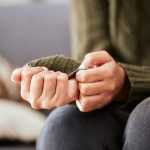

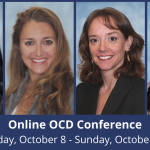




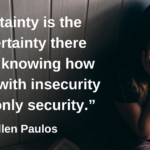

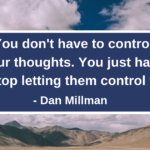
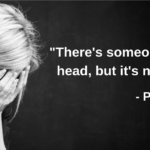

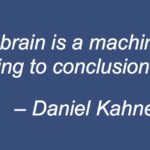





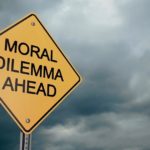






















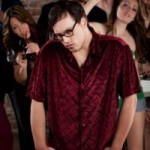







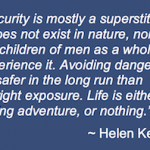
14 Comments
Great information! Thanks so much for sharing it with us & God Bless You!
Hi Ronald!
Great thank you for letting me know and so happy you enjoyed the article!!
Thank you so much for this information! We need more articles like this one!
Hi Mary!
Thank you so much and your very welcome!! Nice to hear the feedback!
Excellent article, a brilliant summary of the behaviours I have found most helpful in my personal ongoing journey with OCD. I can particularly relate to the thought of “what if this is a compulsion and is making me worse?!”…
I had a number of “themes” until the fear of OCD itself had me trying too hard and I got myself caught in a trap of meta-obsessing. My therapist helpfully pointed this out and reminded me that it’s all the same beast and to respond in the same way as for any obsession. Gently and firmly, with purpose towards something valued.
Hi Andrew!
Thank you very much and I am so happy you found it helpful! Yeah catching that meta-obsessing can be a little tricky. So glad to hear that you and your therapist are doing such great work!
Hi Chris:
I just finished reading this. You provide some really useful tips and information here. I’m fairly new to using mindfulness to treat my OCD, but it’s proving quite effective so far. Many thanks for your hard work in writing it!
Hi Mark!
Thank you for your comment and glad that it was useful, that was the hope 🙂 That’s great to hear that your mindfulness journey is going well and best wishes with your continued practice!!
Hi Chris!
Thank you for this article! I’m an OCD sufferer who is doing a dissertation in Buddhist Studies, about how Buddhist teachings may be a useful addition to treatment options for OCD. In my project, I am developing a self-help approach based on the Cheng Wei Shi Lun. It is based on mindfulness, but includes also other elements, because, as you point out, though mindfulness is very effective, refocusing and resisting compulsions can be very hard. Your article was very helpful, because it gave me an overview about what is currently done, and it also raised important questions, like the risk of mindfulness becoming a compulsion in itself. Again, thank you, and if you allow, I am going to cite your article in my dissertation 🙂
Hi Kerstin!
You are very welcome and thank you for reading it!! That sounds like a meaningful and exciting journey regarding your dissertation. So glad you enjoyed the article and I really appreciate hearing about what helpful for you!
Chris was my therapist who i learn a lot from particularly i really enjoyed his empathetic way of conducting a session.
The greatest advantage mindfulness gives you against OCD is to access your insight of “what is what” in any given moment. Stepping back and observing your experience with objectivity helps you to distinguish between thought and a threat. Which in turns helps to build a sense of discernment.
One very important point in Mindfulness which i would like chris to shed some light upon.
Difference between being judgmental and being discerning?
Though i have my thoughts on this but couldn’t write much because of characters limit in the comment?
Hi A,
Thank you so much for your thoughtful comment and question! Yes mindfulness is such a powerful and often crucial component of effective treatment! Here is how I make the difference between the two. Being judgmental is giving your opinion on what you experience, choose what your thoughts/beliefs, including what you see as good or bad, right or wrong, etc. Being discerning is the ability to see this and that. They are not mutually exclusive and work together. You can discern between something you agree with and what you don’t agree with and see that difference. This discernment can be seen between you and others, and within the self. That’s why mindfulness is so helpful to develop.
Hello , I really thank you from deep my heart for this article. its is more than 50 present different from doing ERP without mindfulness in distress and amount of intrusive thought which significantly lessening in mindfullness based ERP ,I really apprciate if you answer this( dose this mindfullness based ERP have same effect as ERP without mindfullness? thank you very much again.
Hi Saya!
Thank you so much for your comment, and I am so happy you found it meaningful. That is a great question! Yes mindfulness-based approaches can be just as effective in response prevention as other non-mindfulness practices! Although we like to see which intervention might work best for a client in not doing or stopping compulsions, I almost always introduce mindfulness as part of our treatment plan. It just works so well!
Thank you so much, and wishing you well in your journey! Best to you